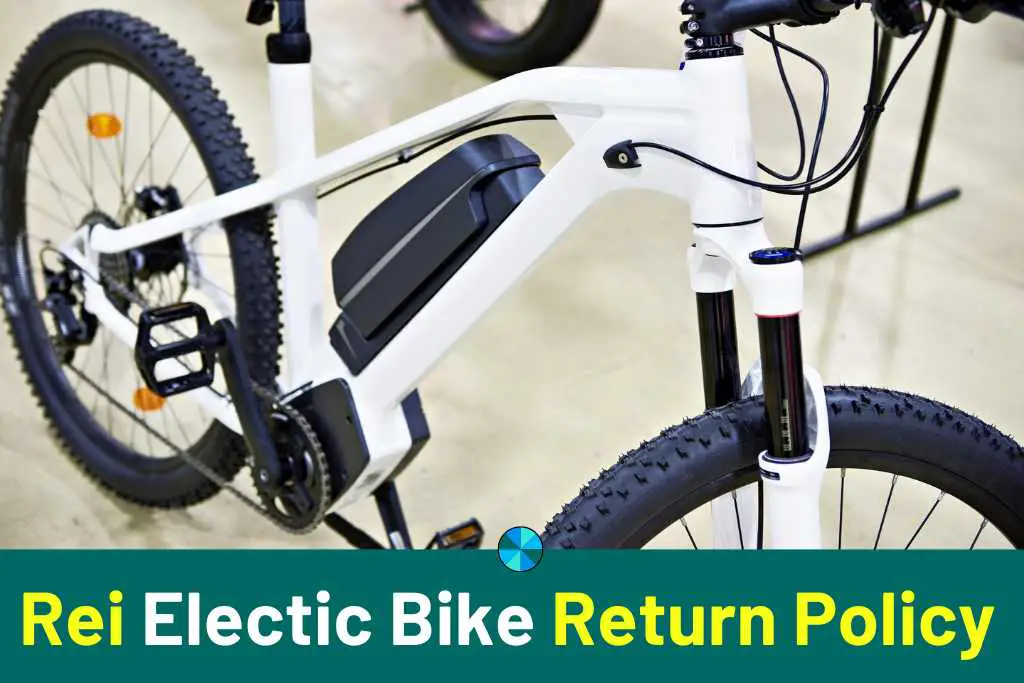If you buy an electric bike from REI and don’t find it to your liking, can you return it, and what does returning it entail?
REI allows returns of new bikes within one year of purchase and used cycling products within 30 days. You can ride a bike before returning it, but you’ll need to provide the original receipt.
Let’s discover what the REI return policy says about electric bikes, what condition the bike needs to be in for it to be returnable, and the different methods you can use for the return.
REI Electric Bike Return Policy
New bikes can be returned to REI within a year after purchase with the original receipt. Used bicycles and cycling accessories (such as seats, tires, and mounts) may be returned within 30 days, but bike trainers must be returned within 90 days.
Holidays and REI Co-op members do not qualify for more extended return policies. Also, remember that anything you buy at a garage sale is “as is” and a final sale, so you cannot exchange it.
Return Requirements
As mentioned earlier, the original receipt is necessary for bike returns to REI. The shop might be able to search up your purchase if you don’t have the receipt but are an REI member or bought the bike online (as previously reported).
Along with all the accessories that came with the bike, you should include any original packaging and/or tags, if any are still present.
REI accepts used and faulty returns and can resale bikes that exhibit indications of wear as used equipment.
You can ride the bike before returning it. However, remember that you cannot replace a bike just due to regular wear and tear, and REI’s Satisfaction Guarantee excludes damage to cycles resulting from misuse or accidents.
Read also >> Does Rei Install Bike Racks? (Do This Before…)
Read also >> Does REI Sell Used Bikes? (This Is Why Nobody Is Talking…)
REI’s Return Process
You may return your bike to any REI shop, whether you purchased it offline or online. Anytime during regular store hours, bring the bike, any remaining packaging and tags, and your receipt to the customer service desk. There are no charges for returns.
In most cases, you’ll get a refund using the same payment method you used initially, but if you used PayPal to make your online purchase, you’ll get a cash or check refund instead.
Please note that REI may refuse your refund if you have a record of creating excessive returns. When to approve and reject returns is at the store management’s discretion.
Returning by Mail
Bikes can’t be returned by mail using REI’s online return system since they’re big and need assembly. You may return a bike by mail by contacting a shipping company directly.
However, our staff advised returning your bike to an REI shop because in-store returns are cost-free.
Returning Without a Receipt
In-store or by mail, REI will not accept a return without a receipt, according to corporate customer care employees. We got in touch with REI sites in Alabama, Kansas, Connecticut, Michigan, and Washington to confirm the application of this policy in stores.
All of the employees with whom we had conversations agreed that REI returns require receipts.
REI welcomes returns within a year of the original purchase, except electronics, which have a 90-day return window, and used products, which must be returned within 30 days.
REI will give a refund using your original form of payment if you satisfy all return criteria. Items marked “Garage Sale As Is” are final sales and not returnable at REI.
How to Look Up Your Receipt
An employee in customer service might be able to track down your receipt if you placed your purchase online or if you are an REI member. All of the following information must be provided:
- Order number
- Member’s name
- Member’s number
- Member’s address
- Member’s phone number
- Member’s email
- Purchasing date
- Purchase location
- Purchase price
The colleague will also inquire as to why the return was made.
You must include all the details above with your return if you are mailing it in without a receipt and a brief explanation of your decision to return the item.
REI can reject your return if you cannot provide accurate information.
Returning Gifts
If you give the buyer’s information as well as the following details, REI will handle gift returns without a gift receipt:
- The gift recipient’s name (Remember to designate your return as a gift recipient refund if you are mailing it back.)
- The member number of the gift receiver (if applicable)
- Address of the gift receiver
- Phone number of the gift receiver
- Email of the receiver of the gift
The gift receiver will get a reimbursement for in-store returns when the item is returned. When you send presents back by mail, REI will send the gift recipient’s name and address a paper check for reimbursement. The initial buyer will be reimbursed if the gift recipient’s refund information is ambiguous or lacking.
How to Make Exchanges
Exchange procedures vary significantly depending on how you purchase the item, but they are straightforward.
In-store Exchanges
You may exchange your item at any REI location by bringing it to the customer service counter. If necessary, an employee of REI can assist you in ordering a replacement product online.
Read also >> Bike Size Chart: 7 Easy Methods How To Choose Right Bicycle
Read also >> Amazon Bike Return Policy (What’s Covered + More)
What are some common frame materials used in e-bike construction, and how do they affect the overall weight and performance of the bike?
E-bike frames are commonly crafted from various materials, with aluminum being a popular choice due to its lightweight yet durable nature. Additionally, a range of frame options, including carbon-fiber and steel, are increasingly being offered in e-bike construction.
The material and design of the frame, in combination with the size of the motor and battery, heavily influence the overall weight of the e-bike. Generally, e-bikes tend to be heavier than traditional bicycles due to the incorporated motor system. However, a lighter frame contributes to a more nimble and agile feel during rides.
When comparing similarly-equipped e-bikes, opting for a lighter model is likely to deliver an enhanced riding experience with improved performance and maneuverability.
How does component quality vary across e-bikes at different price points?
Across various price points in the e-bike market, component quality differs significantly. Higher-priced e-bikes typically feature premium components such as high-end brakes, tires, shifters, and drivetrains that offer greater durability and responsiveness.
In contrast, lower-priced e-bikes often lack these high-end features and come equipped with value-priced components. This discrepancy in component quality directly correlates with the cost of the e-bike, with more expensive models boasting top-tier components compared to their budget-friendly counterparts.
What types of built-in security features might e-bikes come with?
E-bikes may come with built-in security features such as rear-wheel locks attached to the frame and locks on the battery that can be matched to a bike lock from a partner brand.
What are some examples of smartphone integration features available in top-end e-bike electronics?
Top-end e-bike electronics offer various smartphone integration features that enhance the riding experience.
Some examples include wireless connectivity with smartphones for access to apps such as GPS navigation, service record management, and additional screen capabilities.
Furthermore, users can leverage apps to remotely unlock their e-bike’s integrated lock, providing a seamless and connected interaction between the e-bike and smartphone technology.
How can handlebar-mounted LCD displays be beneficial for e-bike riders?
Handlebar-mounted LCD displays on e-bikes offer several advantages to riders. These displays provide valuable real-time information such as battery life status, pedal-assist mode settings, distance traveled, current speed, and more.
By having this data easily visible while riding, e-bike riders can stay informed and make timely adjustments to maximize their riding experience and performance.
The convenience of having all these crucial details readily available on the handlebar-mounted display enhances the overall control and enjoyment of riding an e-bike.
How many pedal-assist levels do most e-bikes offer, and what are the purposes of these levels?
Most e-bikes typically provide riders with 3 or 4 pedal-assist levels for varying riding experiences. These levels are designed to cater to different preferences and needs of the rider.
For instance, the lower assist levels, such as eco mode, are ideal for conserving battery power, ensuring longer ride duration without draining the battery quickly. On the other hand, the higher levels, like turbo or boost mode, are geared towards offering enhanced speed and torque, providing a more vigorous and powerful riding experience.
Riders can select the appropriate assist level based on their riding conditions, energy requirements, and desired performance, thereby allowing for a customized and optimized e-biking experience.
Conclusion
New bicycles can be returned within a year of purchase and used cycling equipment can be returned within 30 days. Before returning a bike, you are permitted to ride it, but you must present the original receipt.

